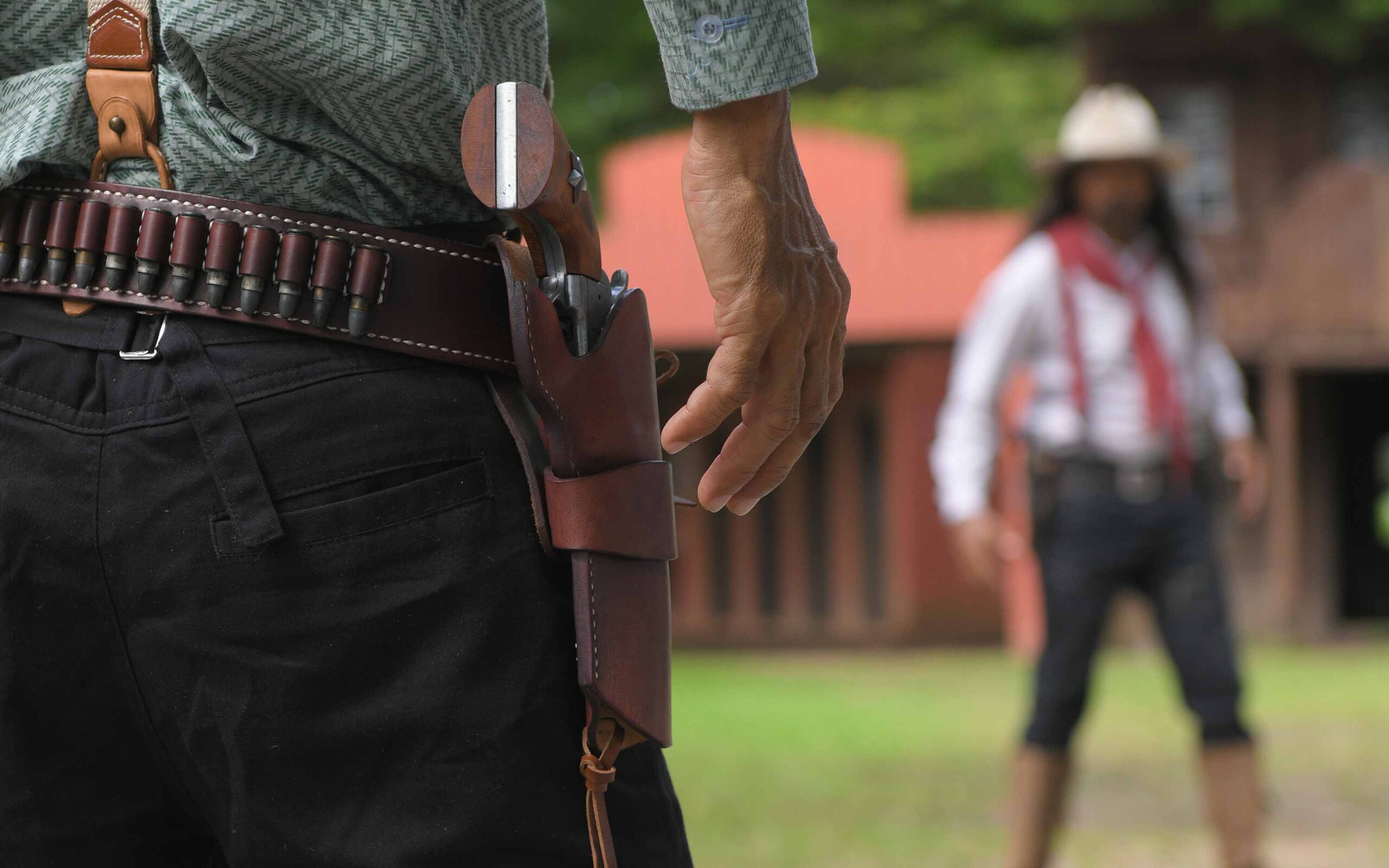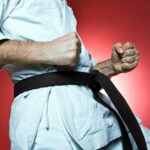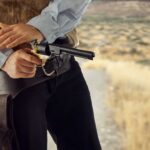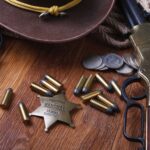Whether you collect historical replicas, cosplay your favorite Western hero, or volunteer at living history events, bringing non-firing replicas into public spaces requires planning. Safety and compliance are not only expected, but they also help protect the hobby’s reputation. With more conventions, fairs, and reenactments resuming across the country, now is the time to refresh your knowledge of replica regulations and etiquette.
This playbook covers what to know before you pack your prop: from peace-bonding and transport to signage and photo-op etiquette.
1. Know the Replica Prop Rules Before You Go
Every event has its own guidelines for display and prop weapons. Some conventions allow non-firing replicas if they are clearly marked, while others may prohibit them entirely. Before attending, read the venue’s weapons or prop policy on their official website or event guide.
Look for rules that define what qualifies as a non-firing or prop weapon. Many venues follow a “zero functional weapon” rule, meaning anything capable of chambering ammunition, firing blanks, or discharging a projectile is not allowed.
If your piece has moving parts or realistic weight, bring documentation that identifies it as a non-firing replica, such as a manufacturer card or receipt from Trigger Replicas. This can simplify discussions with security or event staff and help avoid delays at entry.
2. Understand the Peace-Bonding Process
Peace-bonding is a visual confirmation that your prop has been inspected and cleared. It usually involves a zip tie, tag, or seal applied to your replica’s trigger, hammer, or holster after security verification. At most conventions, you will find a weapons check station near the main entrance. The process is quick: staff verify the replica cannot fire, apply a visible bond, and may give you a card noting the approval. Always keep this bond visible while inside the venue.
For reenactments and fairs, peace-bonding might take a different form, such as colored cords or ribbon loops for uniformed participants. Even if not required, adopting your own visible safety marking helps build trust with the public and officials.
Pro tip: Never remove or reposition the bond once applied. Doing so can violate venue policy and lead to confiscation or ejection.
3. Safe Transport and Storage Between Events
Non-firing replicas are legal to own in most U.S. states, but their appearance can cause alarm in public. When traveling to and from an event, always transport replicas in a closed case or bag. Avoid walking through public spaces with the replica visible.
If you are flying, check airline and TSA regulations in advance. While non-firing replicas are permitted in checked baggage, they must be declared and securely packed. Use a hard case with locks and clearly label it as a non-functional replica firearm.
Once on-site, store replicas responsibly. If your booth or display includes multiple items, use racks or stands that prevent handling by unsupervised guests. Keeping items secured when not in use ensures they remain safe from damage and theft.
4. Follow Signage, Orange Tips, and Display Standards
Visibility markings are a simple way to show your replica is safe. The most common rule is maintaining an orange tip or plug on barrels when displaying or carrying a firearm replica.
While collectors often prefer full authenticity, removing this marking in public can cause unnecessary concern or violate local laws. Many conventions and film sets require orange tips at all times unless the piece is used under controlled conditions.
At fairs or historical reenactments, signage is equally important. Consider placing a small sign near your display that states, “Non-Firing Historical Replica—For Display Only.” This removes any ambiguity and encourages positive engagement from attendees and security staff alike.
5. Practice Proper Photo-Op Etiquette
Photo opportunities are part of the fun, especially when you wear a period costume or showcase a famous prop. However, always handle replicas with courtesy and awareness.
- Never point a replica, even jokingly, at anyone not participating in the photo.
- Ask for consent before including others in staged shots.
- Hold the replica in safe positions, such as resting at your side or aimed toward the ground.
- Avoid public stunts or sudden movements that could alarm nearby guests.
A little professionalism goes a long way in protecting your reputation and ensuring everyone feels comfortable. Remember, a photo is only memorable if everyone in it feels safe.
6. Brief Your Team and Event Staff
If you manage a vendor booth or group display, make sure everyone on your team understands proper handling and event rules. Assign one person as your safety lead to oversee setup, inspections, and visitor interactions.
Provide each member with a quick checklist that includes:
- Where peace-bonding or inspection happens
- How to answer questions from attendees or media
- How to store or hand off replicas safely
- What to do if security raises a concern
This briefing not only prevents misunderstandings but also demonstrates your professionalism to event organizers. Many conventions welcome responsible exhibitors who proactively uphold safety standards.
The Collector’s Role in Public Safety
Non-firing replicas are works of art, connecting history, craftsmanship, and storytelling. When used responsibly, they inspire curiosity rather than concern. Every collector and cosplayer contributes to the reputation of this community by modeling safe and respectful behavior.
Trigger Replicas supports responsible ownership and public display of authentic, non-firing models. By following local regulations and best practices, you help preserve both the history behind your collection and the freedom to share it publicly.
FAQs About Bringing Non-Firing Replicas to Events
What is peace-bonding, and why is it required?
Peace-bonding is a safety measure used by conventions and public events to show that a prop weapon has been inspected and approved for display. It assures staff and attendees that the item cannot fire.
Can I travel with non-firing replicas by air?
Yes, but they must be packed in checked luggage, declared to the airline, and stored in a locked case. Always review TSA and airline guidelines before traveling.
Do I need to keep the orange tip on my replica?
For public events, yes. The orange tip helps law enforcement and security immediately identify the item as nonfunctional. It should remain visible during transport and display.
What should I do if someone mishandles my replica at an event?
Politely but firmly take control of the item, explain that it is a non-firing replica, and remind them of event rules. Never allow strangers to handle pieces unsupervised.
Are there different rules for museums or film productions?
Yes. Museums and professional productions often operate under special permits or insurance coverage, allowing for different display requirements. Always check specific policies.





